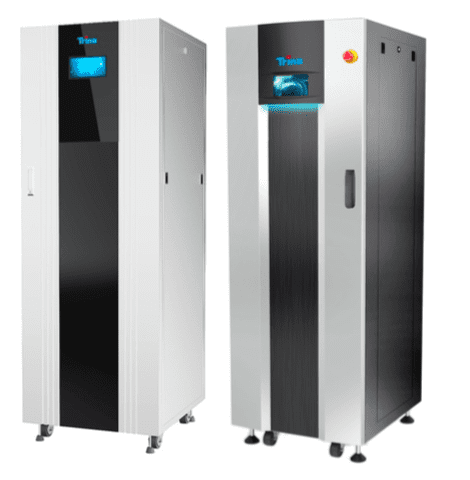Chinese solar giant Trina Solar has quietly unveiled its first energy storage offering, with the launch of a small range of lithium-ion batteries targeted at the residential market.
The batteries, pictured below, come in three different sizes – 3.6kW, 5kW and 9.6kW – and are set to be released on the Australian market – among other select countries – in June, at an expected cost of around $US1200 per kWh.

Doug Smith, country manager for Trina’s Pacific region, said the company’s “soft launch” of the battery at the sidelines of the Australian Solar and Energy Storage conference in Melbourne this week, was not in response to the sensational arrival of Tesla’s Powerwall, but added that this had given the market a huge boost.
“Tesla’s certainly doing the world a favour here, for sure,” Smith told RenewEconomy in an interview. “They’ve done a great job in such a short amount of time.”
According to Smith, Trina – which recently claimed the title as world number one producer of crystalline PV modules – made the strategic decision to get into energy storage more than 18 months ago, forming a new division called Trina BEST (Battery Energy Storage by Trina).
It has been working on the batteries for 12 months now, says Smith, at a purpose-built in Jiangsu, near Shanghai.
Smith said the company’s original energy storage focus – and testing ground – was on remote village applications in rural China, Asia and Africa.
And while the company’s first offering is a residential one – called “Trina House” – the plan is to release grid and micro-grid models (Trina Grid) in the coming year, as well as a commercial model (yet to be named) in the not-too-distant future.
In a presentation , Trina also mooted plans for EV batteries, but Smith says this is more of an “interesting end point” to the company’s battery story, rather than a concrete plan.
Smith told RE the initial price for the Trina Home batteries could be described as “premium value”, suited to a nascent market of early adopters, rather than wide-scale deployment.
“They’re not the most expensive, and they’re not the cheapest,” he said, adding: “I mean, Trina’s never the cheapest. That’s why we’re around.”
The li-ion battery components come, at this stage, from established battery maker ETL. According to Smith, the new-build ETL battery has the inverter built into it, so would be a kind of “plug-and-play” model. But he adds that Trina is still in final decision mode over the supplier for batteries and inverters.
“This is a start,” said smith. “It’s an aggressive play, but we’re not the only ones.”







